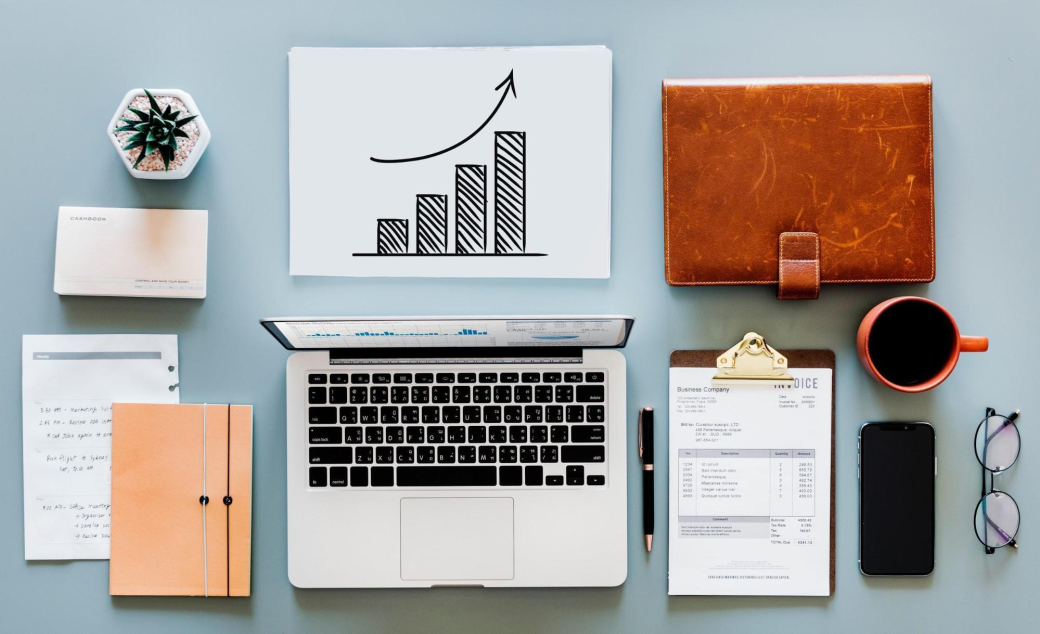
When running a business, accounting is an essential area you need to manage if you want to make it far.
Accounting and finances are often intimidating for new entrepreneurs. And poor mismanagement of them can seriously harm your business. This, combined with the fact that 90% of all startups fail, often discourages new business owners from even starting in the first place.
But while it’s true that these areas can be hard to properly manage, this just goes to show how important they are. For small businesses, keeping track of your finances can be a way to determine if you’re on the right track and whether or not you’re going to be sustainable in the future.
Once you write your business plan, it’s vital to make sure that your finances match it before moving on to your operational activities. This is essentially building the foundation for your business and planning ahead of time.
Managing your finances might seem hard and overwhelming at first. That’s why we’ve put together this guide, which can act as a starting point. So, if you want to increase your accounting knowledge and succeed in your business - be sure to read on.
1. Accounts receivable and accounts payable
With accounts receivable and payable, you’re essentially looking at where the money goes to and from. At its core, accounts receivable is the amount of money that you’re going to collect after selling certain goods or services on credit to your client. Meanwhile, accounts payable is the amount of money you owe after buying certain goods or services on credit from a supplier or a vendor.
While this sounds fairly straightforward, your accounts receivable and payable are the foundation for your whole finances. They provide the clearest indicator for your business income, and you can use them to measure your profitability.
It’s essential you know how to properly track your accounts receivable and payable and don’t get them mixed up. Otherwise, you might end up forgetting if you’ve paid someone or if someone paid you, and then your whole system becomes a mess.
You want your accounting process to make sense and be organized. As such, you should manage your accounts on a consistent and routine basis — meaning recording transactions as they happen. Be sure to document everything and have a clear approach to bookkeeping.
If you’re a small business owner, you might not necessarily be dealing with a lot of accounts in the present. But as you scale up, you might want to employ other ways and tools to boost your business.
2. Cash flow vs revenue
If you don’t know what you’re looking for in your financial statement, it’s inevitable that you’ll get lost. Putting aside the countless number crunching you might have to do, some concepts and terms sound nearly identical. Be that as it may, the devil is in the details, and not knowing the difference between two seemingly identical terms can seriously harm your business.
One specific example of this is the difference between cash flow and revenue. Knowing the difference can help you manage your financial metrics better and stay sustainable.
What is cash flow?
A cash flow statement is a report that tells you how much money is coming into and going out of your business during a specific time period. To stay profitable, you need to have a positive level of cash flow.
This is then used to determine your liquidity. This means having the right amount of cash flow to meet short-term financial obligations as they come up (paying employees, covering costs and expenses, etc.).
Your cash flow statement is useful because it can help you see the bigger picture of your business. More specifically, it covers three main activities:
- Operating activities — your primary means to generate revenue.
- Investing activities — buying or selling assets related to your business.
- Financing activities — changes in your equity and borrowing activities (paying debts, costs, etc.).
What is revenue?
Revenue, meanwhile, is the total amount of money you receive from selling certain goods or services. In other words, it measures only the income from sales.
Any money brought into your business from business activities is considered revenue. It’s important to note that revenue does not take into consideration the expenses that occurred during the production of your goods or services.
3. Cost of goods sold (COGS)
There are many different types of costs and expenses in the accounting world. If you don’t want to get lost in your financial statements, it’s important you know how to classify the type of costs you’re going to be dealing with.
Not to mention, one of the best ways of scaling up your business is by reducing costs. Your costs, in turn, have a huge impact on other parts of your finances. So, it’s an area of accounting you can’t take any chances on.
By definition, your cost of goods sold (COGS) includes the costs that go into the production of your product or delivering your service. Knowing this cost and how to reduce it is the first step in increasing your profit margins.
When looking at your COGS, you also need to look at your gross profit margins. Ideally, you should be aiming to increase your income and reducing your costs. Your income may be high, but if your COGS is high as well, that means the profit you’ll be left with might not be as much.

4. Burn rate
This is another term that has to do with your costs and overall business health. The burn rate is a great way to measure your sustainability and how long you can stay afloat as a business until sales rise.
Assuming you’re a small business already funded by venture capital, your burn rate shows you how long you can continue operating until you run out of money. For example, if you’re spending a certain sum of money each month to continue operating, then that’s your burn rate quoted in terms of cash spent per month. This includes your monthly fixed and variable expenses, rent costs, employee salaries, and more.
The reason your burn rate matters is because first of all, it tells you when you’re going to run out of money — assuming you have a clear set of fixed expenses, or varied ones you can estimate. Knowing how much cash you burn each month is essential for proper cash flow management. If you want to plan ahead, you’ll want to know how much cash you’ll have by that time.
Aside from that, investors look at your burn rate when they consider whether or not they should fund your business. If your burn rate is greater than the forecast, or if your revenues are not growing as quickly to match with your burn rate, they might be more reluctant to invest.
Of course, the lower your burn rate, the better. Ideally, it should be negative, as that would mean you’re growing your cash revenues instead.
5. Return on investment (ROI)
Finally, you have probably already heard of this term. Return on investment (ROI) is a classic metric of financial analysis in regards to investing time or money into something. Essentially, it evaluates your efficiency regarding investment and measures if your investment was worth it or not.
ROI is calculated as follows:
ROI = (gain from investment — cost of investment) / cost of investment
The gain from the investment, in this case, refers to the proceeds obtained from the sale of the investment of the interest.
What makes this metric so effective is how simple yet versatile it is. The calculation itself isn’t very complicated and can have a number of different applications. Through ROI, you can measure the profitability of just about every part of your business. From your marketing campaigns, to inventory, to your HR and company culture.
At the end of the day, there are a lot of financial data you need to take into consideration when running a business. But when you’re making a business decision or thinking about investing in a certain project, what you need to be looking at is the ROI. Treating this metric seriously and finding the right applications for it can save you a lot of time and money down the road.
Wrapping Up
All in all, regardless of whether you’re running a small business or a huge corporation, your accounting and finances can make or break your business. Even if you decide to just hire an accountant to handle all of that area for you, it’s still a good idea to have a general concept of your finances. As a business owner, it’s essential you know where your money is coming from and where it’s going to. Also, it would be great for you to familiarize yourself with tax deductions for your small business.
If you want to continue operating as a business, you should also be aware if you’re managing your finances correctly. Knowing where and how you’re getting your accounts receivable is only the beginning. From there on, you also need to make sure your cash flow is positive, you’re using your money in the most optimal way, and that you’re not going to suddenly run out. Finally, when you decide to scale up your business, you need to know if you’re going about it in the best way possible and if it will pay off.
Did we miss any accounting terms that you think are essential for a business owner to know? Let us know in the comments!





Leave a reply or comment below